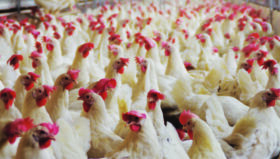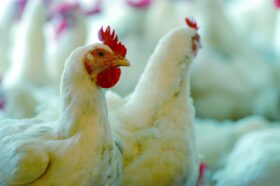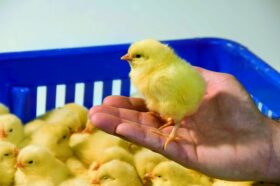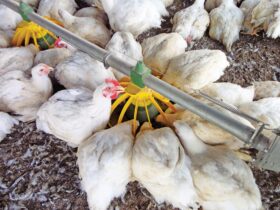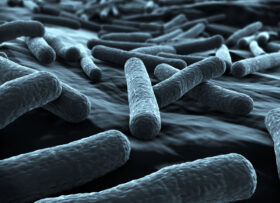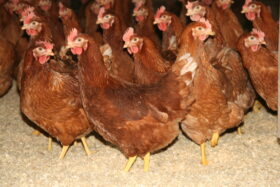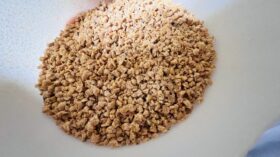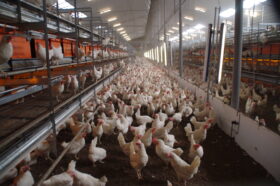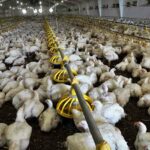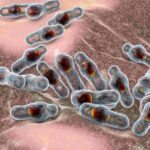Dr. Vitor Arantes, Global Technical Services Manager and Global Nutritionist, Hy-Line International – Conference Report
The layer industry has gone through significant changes during the past decades and has a remarkable capacity to cope with new challenges. Dr Vitor Arantes, Global Technical Services Manager and Global Nutritionist, Hy-Line International, noted that increased egg production, improved feed efficiency, and adaptation of egg quality and bird welfare to consumer preferences have contributed significantly to the success of the egg industry. However, continuous improvement in egg production per hen housed is the most important selection criteria in layer breeding.
Egg producers needs include:
- More saleable eggs,
- Eggshell quality,
- Easier behaviour
- Housing systems
- Egg size specifics
- Sanitary / environmental challenges
- Profits through productivity
Primary breeders can deliver these producer needs through:
- Having the correct product for each country
- Constant follow up
- Local presence, trust relationship
- Accurate data collection
- Critical data analysis
- Understand the company’s goals
- Customized technical services according to each customer needs
How has genetics changed?
Examples of genetic progress in layers from 1984 to 2022 cited by Dr Arantes include:
- Higher persistency (+30 weeks >90%)
- Higher egg mass (+5.5 kg/hen housed)
- Smaller hen (-21% mature body weight)
Dr Arantes states the record clutch size, defined as the unstopped length of individual egg production on a daily basis, was an amazing 474 days for a White Plymouth Rock hen. This genetic progress necessitates adjustments in nutrition and management.
As shown below, growth and organ development occur at various ages. “There is no margin for mistakes – a lack of growth during a stage could have a detrimental impact on pullet quality and subsequent production,” stressed Dr Arantes.
Multi-phasic growth and development during rearing and start of lay
| System | Age (weeks) | Consequence |
| Gastrointestinal | 0-6 | Shorter intestinal tract/reduced nutrient absorption |
| Immune | 0-6 | Flocks more susceptible to disease challenges |
| Skeleton | 6-12 | Shorter frames/less calcium reserves |
| Muscle | 6-12 | Impact in persistency of production |
| Fat | >12 | Excess can lead to fatty liver, prone to prolapse and mortality |
0-6 weeks of age
Most of the development of the organs of the digestive tract and the immune system occurs during the first 6 weeks of age. Problems that occur during this period can have negative effects on the function of these systems. Birds stressed during this period may have lifelong difficulties in digesting and absorbing feed nutrients. Immunosuppression may also result from problems during this period, leaving the bird more susceptible to diseases and less responsive to vaccinations.
6-12 weeks of age
Most of the adult structural components – muscles, bones and feathers are obtained during the period of rapid growth that occurs at 6-12 weeks of age. Growth deficiencies during this period will prevent the bird from obtaining sufficient bone and muscle reserves, which are necessary to sustain a high level of egg production and to maintain good eggshell quality. About 95% of the skeleton is developed at the end of the bird’s 13 weeks of life. At this time, the plates of the long bones become calcified and further growth in bone size cannot occur.
12-18 weeks of age
During this period, the growth rate slows, and the reproductive tract matures and prepares for egg production. Muscle development continues and the proliferation of fat cells takes place. Excessive weight gain during this period can result in an excessive amount of abdominal fat. Low body weight and stressful events at this time can delay the start of egg production. From 7-10 days before oviposition of the first egg, the medullary bone that is located within the cavities of the long bones can be increased by feeding the bird a pre-laying ration with higher levels of calcium than the development stage.
Bodyweight is a key factor for flock management as this will influence future performance of birds. Consequently, bodyweight should be controlled during the whole life of the layer flocks. Management, in particular nutrition and lighting programs, can help to control bodyweight so birds can achieve their genetic potential.
Uniformity
Uniformity is the most important KPI in our business. However, with the trend towards larger flocks, maintaining uniformity is becoming more challenging. With larger flocks, it is difficult to source one unique flock which thus usually comprises multiple breeding flocks of different ages. Inevitably, uniformity will be poor, hence the need for tools to address unexpected issues. Lack of uniformity becomes a self-perpetuating cycle – dominant versus dominated.
Many egg producers use average body weights compared to the breeder recommendations as a guide to flock status. However, knowing if you have good body weight uniformity is another valuable management tool. In any flock some birds are lighter or heavier than the average body weight. Poor uniformity makes management decisions, such as lighting, feed amounts or diet phase more difficult.
Ideally, the body weight coefficient of variation (CV) should be +/-10% of the mean, increasing the likelihood that your management decision will be appropriate for most of the flock. Inappropriate diet changes, bird handling, vaccination and transfer can reduce uniformity. Flocks should be at 90% uniformity at the time of transfer to the laying facility. Body weight at point of lay significantly affected egg production and eggshell quality.
Grading into 2 or 3 sub-populations of different average bodyweights may be necessary so that each group can be managed in a way that will achieve good whole flock uniformity at the point of lay. The best predictor of future laying performance is the pullet’s body weight and body type at the point of lay.
Vision egg
Vision Egg is a custom diagnostic tool used to analyze data and emphasize flock performance to achieve the highest genetic potential from Hy-Line layers with recommendations connected to customer profitability. This growing, robust database includes data from over 1 billion hens strengthens our flock performance diagnostic tool for improved profitability for Hy-Line customers.
Hy-Line customers can take advantage of this opportunity by sending flock data to their regional business manager or technical service specialist. The information shared with Hy-Line is kept completely confidential.
Summary
The challenge is not egg numbers, stated Dr. Arantes, but saleable eggs. Correct body weight and high uniformity of the flock at point of lay will result in good performance over the laying period, with high peak production and good persistency of production and the production of good quality eggs. Management is the key factor to regulation of body weight during rearing and at point of lay.



